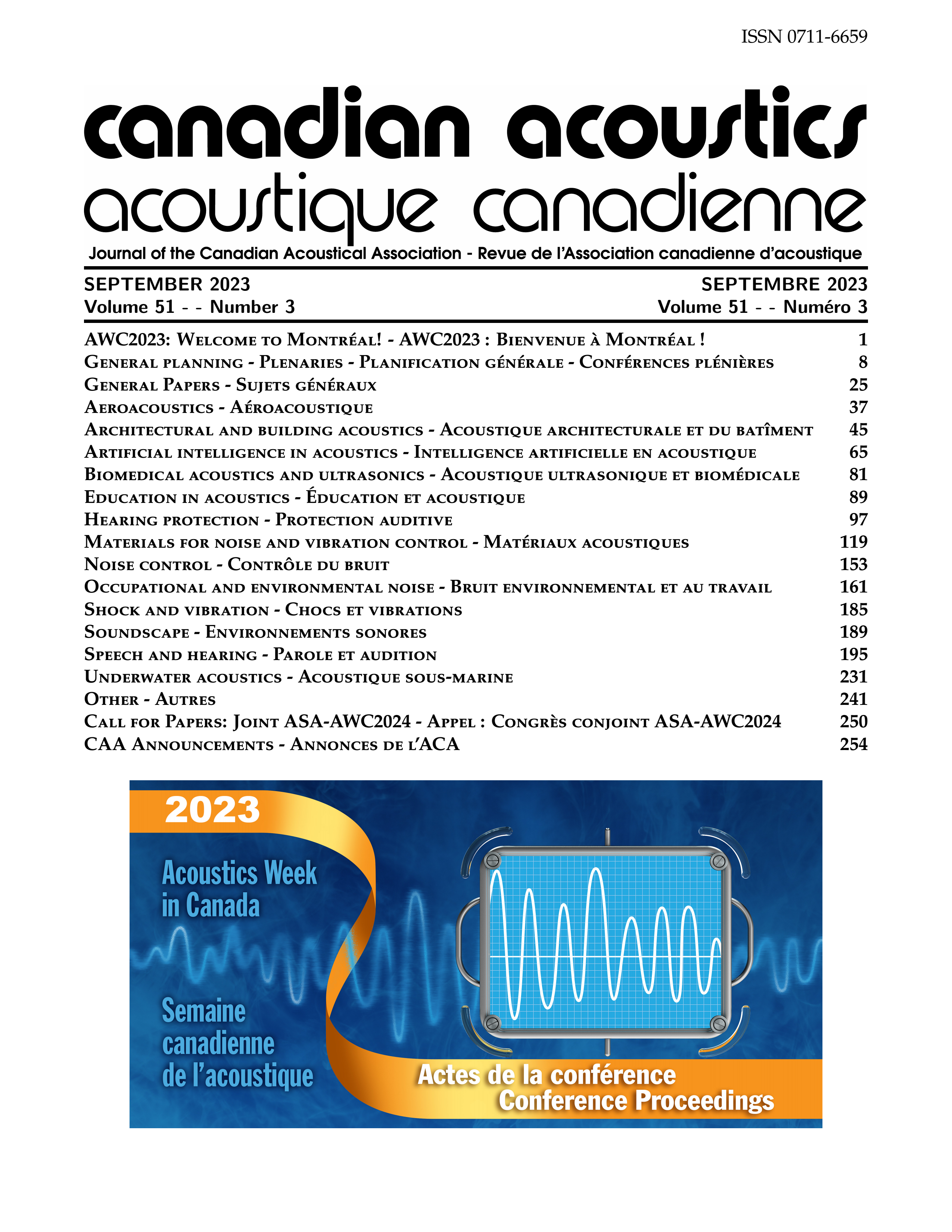Preliminary Numerical and Experimental Studies of Active Acoustic Control of Double-Glazed Partition Walls
Abstract
Glass partitions are used in workspaces to separate areas. To improve acoustic insulation, these partitions are composed of double glazing separated by an air space. However, double glazing offers weak insulation at low frequencies. The aim of this study is to improve low-frequency insulation in double-glazing using an active control system. The assumption is that minimizing the acoustic pressure in the cavity between the partitions will decouple the vibration of the two partitions and increase the insulation of the double glazing. This approach will be compared with the optimal strategy of directly reducing sound pressure in the receiving medium. The double-glazing numerical model consists of 30.48 cm square partitions with 6 mm thickness and 60 mm separation. The double glazing has free boundary conditions and is placed in an impedance tube. To create the active system, an error microphone and loudspeaker are placed in the cavity between the partitions. The numerical study is conducted in the frequency domain. Experimental tests are carried out for harmonic disturbances in the frequency range from 50 to 550 Hz. The control law minimizes the squared pressure at the error microphone and is obtained using Newton's algorithm. As expected, numerical simulations show a greater improvement in transmission loss with transmitted pressure control than with minimization of the acoustic pressure between the partitions. Additionally, experiments have shown that the optimal experimental transmission loss, up to 35 dB, is higher than the attenuation obtained by minimizing the acoustic pressure in the cavity, up to 20 dB. Thus, simulations and experiments have shown that controlling low-frequency sound pressure in the cavity of double-glazed partitions is an acceptable, if not optimal, approach. Future work would involve considering the presence of several loudspeakers and microphones in the cavity and compensating the measured sound pressure to optimize sound insulation.Additional Files
Published
How to Cite
Issue
Section
License
Author Licensing Addendum
This Licensing Addendum ("Addendum") is entered into between the undersigned Author(s) and Canadian Acoustics journal published by the Canadian Acoustical Association (hereinafter referred to as the "Publisher"). The Author(s) and the Publisher agree as follows:
-
Retained Rights: The Author(s) retain(s) the following rights:
- The right to reproduce, distribute, and publicly display the Work on the Author's personal website or the website of the Author's institution.
- The right to use the Work in the Author's teaching activities and presentations.
- The right to include the Work in a compilation for the Author's personal use, not for sale.
-
Grant of License: The Author(s) grant(s) to the Publisher a worldwide exclusive license to publish, reproduce, distribute, and display the Work in Canadian Acoustics and any other formats and media deemed appropriate by the Publisher.
-
Attribution: The Publisher agrees to include proper attribution to the Author(s) in all publications and reproductions of the Work.
-
No Conflict: This Addendum is intended to be in harmony with, and not in conflict with, the terms and conditions of the original agreement entered into between the Author(s) and the Publisher.
-
Copyright Clause: Copyright on articles is held by the Author(s). The corresponding Author has the right to grant on behalf of all Authors and does grant on behalf of all Authors, a worldwide exclusive license to the Publisher and its licensees in perpetuity, in all forms, formats, and media (whether known now or created in the future), including but not limited to the rights to publish, reproduce, distribute, display, store, translate, create adaptations, reprints, include within collections, and create summaries, extracts, and/or abstracts of the Contribution.


